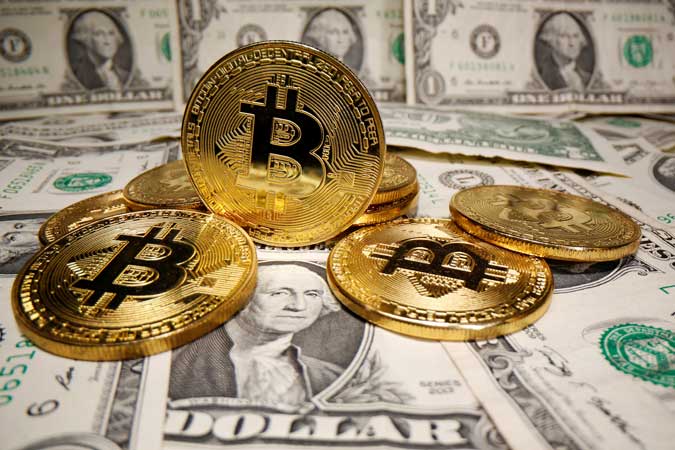
THE central bank is not keen on including cryptocurrencies as part of its foreign exchange buffers despite the recent surge in the value of bitcoin, Bangko Sentral ng Pilipinas (BSP) Deputy Governor Francisco G. Dakila, Jr. said.
“I don’t think bitcoin is eligible as gross international reserves (GIR). To be counted as GIR, only holdings of gold and convertible currencies can be included as part of GIR,” Mr. Dakila said in a Tuesday forum organized by the Joint Foreign Chambers of the Philippines.
Mr. Dakila was answering a question by American Chamber of Commerce Senior Advisor John Forbes on whether the central bank is considering holding cryptocurrencies given the recent appreciation in the value of bitcoin.
Bitcoin, which began circulating in 2009, is the original and most popular form of cryptocurrency. On Tuesday, Bloomberg reported the digital token rose as much as 4.3% and was trading at about $53,900 as of 12:54 p.m. in Hong Kong.
“The value of bitcoin can go either way. I would say it [cryptocurrency] is not something where you would put your reserves into. You have to put it [reserves] in a very safe asset,” Mr. Dakila said.
He explained that portions of the GIR satisfy specific definitions set by international bodies, as data is mandated for reporting to the International Monetary Fund (IMF).
The country’s foreign exchange buffers stood at $108.799 billion as of end-January, based on BSP data. This is down by 1.19% from the record $110.117 billion as of end-December but still 25% higher than its $86.868-billion level a year earlier.
The BSP said the monthly decline was caused by the payment for foreign debt obligations and the lower valuation of its gold holdings.
The Philippine GIR is composed of gold reserves, gains from investments abroad, foreign currency deposits, reserves with the IMF, and special drawing rights or funds that can be tapped from the IMF.
A country’s foreign exchange buffers protect it from market volatility and is an assurance of the country’s debt-servicing ability in times of an economic downturn. The GIR level as of end-January is enough to cover 9.4 times the country’s short-term external debt based on original maturity and 5.1 times, based on residual maturity, the BSP said.
As of end-September, the country’s external debt-to-GDP (gross domestic product) ratio as of end-September 2020 stood at 25.3%, slightly higher than the 22.6% seen in the same period of 2019.
“Our debt position remains on the safe side. That increase has been very manageable,” Mr. Dakila said.
Latest data from the Bureau of the Treasury showed the National Government’s outstanding debt stood at P10.327 trillion as of end-January, higher by 5.4% the P9.795 trillion as of end-December and by 33% as of end-January 2020’s P7.763-trillion level.
Earlier, BSP Governor Benjamin E. Diokno said the central bank is unlikely to issue a central bank digital currency within the next five years although they have been exploring research on the field. However, the BSP has expanded guidelines for virtual asset service providers as cryptocurrency transactions gain traction around the world. — Luz Wendy T. Noble

